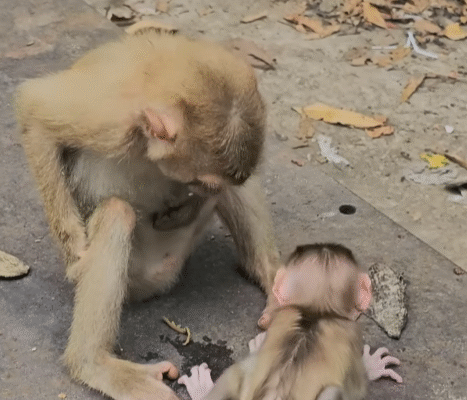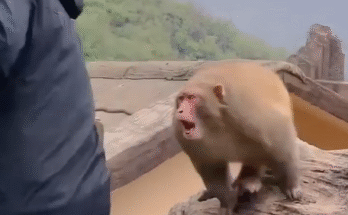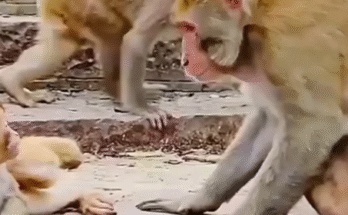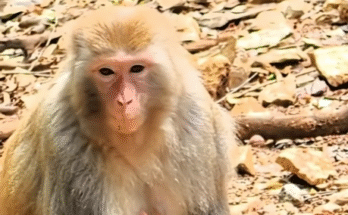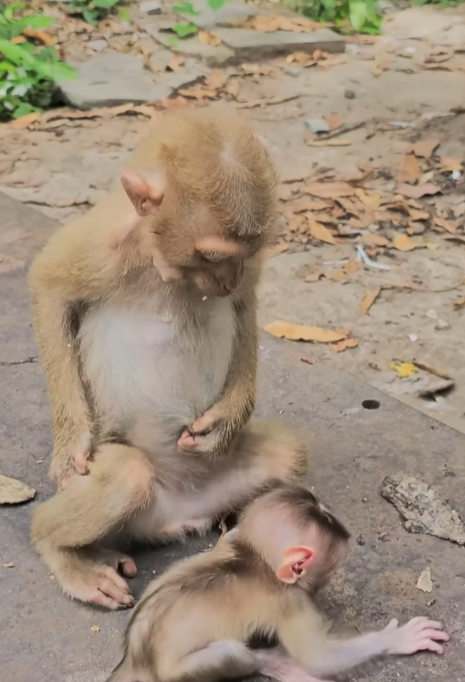
Monkeys are some of the most fascinating and recognizable creatures on Earth. Their curious eyes, dexterous hands, and playful behavior make them captivating to humans, who have long been fascinated by their intelligence and social structures. But monkeys are more than just charming animals in the wild—they are a testament to evolution, survival, and adaptability. They have roamed the Earth for millions of years, evolving alongside other mammals and witnessing dramatic changes in the planet’s landscapes, climates, and ecosystems. Understanding their history provides insight not only into the evolution of primates but also into the remarkable resilience of life itself.
The Origins of Monkeys
Monkeys belong to the primate order, a diverse group of mammals that also includes apes, lemurs, and humans. Primates are believed to have evolved roughly 60 million years ago during the Paleocene epoch, shortly after the extinction of the dinosaurs. Early primates were small, tree-dwelling creatures, adapted for life in the dense forests that covered much of the Earth at the time.
The first monkeys appeared later, around 40 million years ago, during the Eocene epoch. Fossil evidence shows that early monkeys had features remarkably similar to modern ones: flexible limbs, grasping hands, forward-facing eyes, and relatively large brains. These traits allowed them to navigate the forest canopy efficiently, seek out fruits and insects, and communicate with others of their kind.
Monkeys are divided into two main groups: New World monkeys (found in Central and South America) and Old World monkeys (native to Africa and Asia). The two groups diverged roughly 40 million years ago, likely due to continental drift, climate changes, and geographic isolation. This separation allowed them to adapt to vastly different environments, which shaped their physical characteristics, behavior, and social structures.
Old World vs. New World Monkeys
Old World monkeys include species like baboons, macaques, and colobus monkeys. They are typically larger, have downward-facing nostrils, and often have tails that are not prehensile. Many live on the ground as well as in trees, demonstrating remarkable adaptability.
New World monkeys, such as spider monkeys, howler monkeys, and capuchins, have flat noses with outward-facing nostrils and often possess prehensile tails that act as a fifth limb. This tail is a unique evolutionary adaptation that allows them to swing, hang, and maneuver through dense rainforests with incredible agility.
The divergence of these groups illustrates the power of evolution. While sharing a common ancestor millions of years ago, they adapted to the specific challenges of their respective continents. Old World monkeys often faced open savannahs, rugged mountains, and seasonal changes, while New World monkeys adapted to lush, tropical rainforests with abundant trees and foliage.
Adaptations for Survival
Monkeys’ success over millions of years is due in large part to their adaptability. Their dexterous hands allow them to grasp branches, pick fruits, and manipulate tools. Their keen eyesight, especially in color, helps them identify ripe fruits and detect predators. Many species live in complex social groups that provide protection, cooperation in finding food, and opportunities for learning from one another.
Social intelligence is another key factor in monkeys’ survival. Grooming, communication, and hierarchy maintain cohesion in groups. By working together, monkeys are able to detect threats early, raise offspring more successfully, and share knowledge about safe routes and food sources.
Dietary flexibility also contributes to their longevity. Some monkeys are frugivorous, primarily eating fruits, while others are omnivorous, including leaves, insects, seeds, and small animals in their diet. This versatility allows them to survive in varying conditions and adjust to seasonal changes.
Monkeys and Evolutionary Insights

Monkeys are closely related to apes, including humans. Studying monkeys can provide insights into the evolution of intelligence, social behavior, and even disease. Fossil evidence and genetic studies show that humans and Old World monkeys share a common ancestor that lived roughly 25–30 million years ago. While humans evolved into bipedal, highly intelligent beings, monkeys maintained adaptations for life in the trees, on the ground, and in complex social environments.
Through millions of years, monkeys have survived climate shifts, volcanic eruptions, habitat changes, and even early human interference. Their ability to evolve and adapt demonstrates the resilience of life and highlights the intricate relationships between species and their environment.
Monkeys in the Fossil Record
The fossil record provides fascinating insights into the history of monkeys. Early primate fossils, discovered in Africa, Asia, and South America, reveal tiny, agile creatures with long tails and grasping hands. As the continents shifted and climates changed, these primates diversified into the wide array of monkey species we see today.
For example, fossil evidence from the Miocene epoch (around 23–5 million years ago) shows that monkeys were widespread across Europe, Africa, and Asia, indicating they thrived in a variety of climates. Some species evolved for life in dense forests, while others adapted to open grasslands, demonstrating incredible ecological versatility.
Monkeys and Human Interaction
Monkeys have long fascinated humans. Ancient cultures revered them in mythology, art, and religious symbolism. They appear in Hinduism, Buddhism, and African folklore as symbols of cleverness, mischief, and spiritual guidance.
However, humans have also posed challenges to monkeys’ survival. Deforestation, hunting, and habitat destruction have forced many species into smaller, fragmented territories. Despite this, monkeys continue to adapt, sometimes living alongside humans in cities and agricultural areas, scavenging for food, and displaying remarkable intelligence.
The Role of Monkeys in Ecosystems

Monkeys play crucial roles in ecosystems. They are often seed dispersers, eating fruits and spreading seeds throughout forests, which promotes plant diversity and forest regeneration. Their movements through the canopy also help maintain ecological balance, allowing light to reach the forest floor and creating habitats for other species.
Moreover, monkeys serve as a food source for predators, linking them into complex food webs. Their behavior, social structures, and feeding habits can significantly impact the health and diversity of their habitats.
Challenges and Conservation
Despite their adaptability, many monkey species face severe threats today. Habitat loss, climate change, hunting, and illegal pet trade are driving some species toward extinction. Conservation efforts, such as protected reserves, wildlife corridors, and rehabilitation programs, are essential to preserve these ancient survivors.
Studying monkeys also teaches us about human responsibility. We share a long evolutionary history with these animals, and their survival depends on our ability to coexist with the natural world. Protecting their habitats ensures the survival of countless other species and maintains ecological balance.
The Legacy of Monkeys on Earth
Monkeys are living proof of life’s resilience and adaptability. They have survived millions of years, witnessing shifts in continents, climates, and ecosystems. From the tiniest marmoset to the largest mandrill, each species carries a unique evolutionary story. Their playful antics, intelligence, and social complexity remind us of the diversity of life and the intricate connections between species.
As we continue to explore the natural world, monkeys offer both inspiration and a warning. They inspire us with their adaptability, intelligence, and social grace. They remind us of our own evolutionary roots and the interconnectedness of all living beings. At the same time, their struggles highlight the consequences of human impact on the planet—a call to act with care and responsibility.
Conclusion
Monkeys have been part of Earth’s story for millions of years, evolving, adapting, and thriving across continents. They are remarkable examples of resilience, intelligence, and social complexity. From their early ancestors swinging through prehistoric forests to modern species navigating both wild habitats and human-dominated landscapes, monkeys embody the beauty and intricacy of evolution.
By understanding their history, studying their behavior, and protecting their habitats, we honor not only monkeys but the incredible tapestry of life on our planet. Monkeys remind us that survival is a balance of adaptation, cooperation, and curiosity. They invite us to observe, learn, and appreciate the millions of years of evolution that shaped not only them but all living creatures—including ourselves.
Monkeys are more than playful forest dwellers—they are living history, guardians of ecological wisdom, and a testament to the enduring power of life on Earth.
